Cannabis may be one of the strongest and most complex plants to interact with our system, proving to have many harmonious benefits. There are other botanicals that have wondrous effects as well, like chamomile, lavender, lemon balm, and valerian root. Combined in the right manner, these plants can create a whole-body healing synergy, efficient for any time of day.
Today we’ll explore these herbal synergies, explaining what each plant component does and sharing a few ways to blend them. Herbal knowledge can be helpful in many stages of life, whether you’re sick, in pain, unhappy, tired, nauseous, or simply feeling out of balance.
The Science of How Plants Work Together
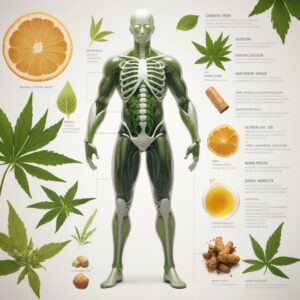
Cannabis works mainly on the Endocannabinoid System (ECS), which affects mood, pain, sleep, anxiety, and many other internal systems. Other plants and herbs primarily influence the nervous, digestive, endocrine, immune, and respiratory systems, and we could go on.
When we consume more than one healing element at a time, we can expect not only a blended result but something entirely new, a phytochemical synergy. Think of it as the entourage effect, but expanded into multi-plant harmony.
“Just as THC and CBD balance each other, certain herbs contain terpenes and flavonoids that amplify or soften cannabis’ effects. Chamomile’s bisabolol complements cannabis’ myrcene, creating a calm that feels organic, not overpowering.”
Blends work both ways, they can complement your experience and help amplify healing, or they can amplify the problem. Great care must be taken when pursuing these results.
Human Systems & the Plants That Interface with Them
1. The Endocannabinoid System (ECS) – The Master Regulator
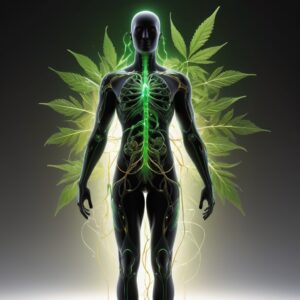
Starting with the obvious: our body’s equilibrium, or balance. The ECS governs homeostasis across mood, appetite, pain, inflammation, and sleep. Cannabis interacts here directly (THC → CB1, CBD → CB2 receptors), while herbs like echinacea, black pepper, and turmeric support ECS tone indirectly through other compounds.
Note: Pairing plants that affect this system creates balance throughout the body, encouraging calm, collected thinking.
2. The Nervous System – Calming & Regulation
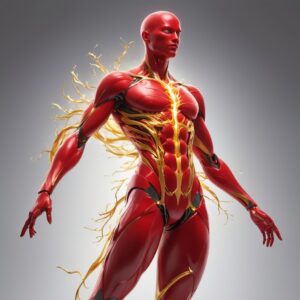
Found everywhere in the body, the nervous system protects us from external and internal stressors. It’s the body’s messaging network, think of it as your internal news and social media feed. Herbs like chamomile, lavender, valerian root, and lemon balm act on the GABAergic system, increasing GABA (your brain’s “brake pedal”), helping quiet an overactive mind.
Note: These are the plants you’re looking for to de-stress the mind. We often overthink our problems, which raises our heart rate and increases anxiety. These herbs help calm mental chatter, lower our “thoughts per minute,” and steady the heart.
3. The Endocrine System – Hormonal & Stress Balance

Hormonal balance is vital as we grow and age. Many modern medications can throw this balance off. Herbs like ashwagandha, holy basil (tulsi), and maca are known as adaptogens, they help regulate the stress hormone cortisol. Cannabis also influences cortisol and serotonin pathways, and when used intentionally, this pairing can help restore hormonal balance after chronic stress or fatigue.
Note: The big tolls in life, mood swings, energy dips, and emotional burnout, are often due to hormonal imbalance. Natural remedy recommendations include licorice root, maca root, and ginseng.
4. The Digestive System – Gut–Brain Connection

Good digestion means excellent absorption, and that leads to a healthy body and mind. No drowsiness, just steady energy and a balanced appetite. Peppermint, ginger, fennel, and chamomile are digestive powerhouses. Cannabis activates CB1 and CB2 receptors in the gut, reducing inflammation and nausea. Together, these herbs enhance gut motility, ease cramping, and support the gut-brain axis.
Note: A calm gut = a calm mind. This connection bridges mental and physical wellness beautifully.
5. The Immune System – Anti-Inflammatory Alliance

Inflammation is often a healthy response, the body’s way of healing, but too much can become harmful. Cannabis (especially CBD) and herbs like turmeric, ginger, and rosemary share potent anti-inflammatory and antioxidant compounds. Together they regulate immune signaling, helping the body manage inflammation naturally.
Note: These are all foods that belong in your daily diet. Their components fit into almost every meal. Antioxidants are vital for maintaining every part of the body’s systems.
6. The Circulatory System – Flow & Energy

The spread of oxygen to every cell in the body is crucial, the more efficient the flow, the stronger your system. Herbs like rosemary, ginkgo biloba, and cayenne improve circulation and oxygen delivery. Cannabis terpenes such as pinene and limonene enhance alertness and cardiovascular tone when used moderately.
Note: Stimulating the body keeps oxygen moving, fueling all your organs and keeping them stronger for longer.
7. The Respiratory System – Cleansing & Clarity

Yes, there are herbs that can improve oxygen intake efficiency. Whatever benefits the lungs benefits the whole body. Thyme, eucalyptus, and peppermint are classic respiratory herbs. Combined with cannabis (especially low-THC or CBD-dominant blends), they can open airways, clear mucus, and create a refreshing, invigorating experience, particularly in teas or aromatherapy.
Note: To maximize results, avoid smoking products while using these herbs.
8. The Reproductive System – Hormonal & Sensual Wellness

Libido is important for both physical and mental health, helping combat depression and low energy. Damiana, maca, and rose improve libido and blood flow. Cannabis enhances sensory awareness and relaxation, making these combinations excellent for sensual or relationship-focused blends.
Note: Cannabis (mainly THC) often acts as an aphrodisiac for women, though not for everyone. For men, moderate THC can help delay climax, improving the shared experience.
Practical Ways to Combine These Plants
Each to their own, we all have our preferred ways of consuming plant medicine. Here are some suggestions and their potential benefits. Just ensure your herbs are properly cured or prepared before use.
Dried: Most flowers, leaves, and seeds should be dried and cured before consumption.
Wet: Roots and fruits are often best used fresh.
Herbal Teas and Blends
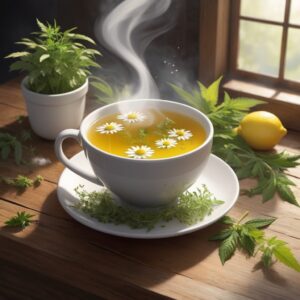
This method, in my opinion, is by far the best, and the science backs it up.
You absorb active compounds through the digestive tract slowly and evenly, not in a sudden spike like smoking.
This results in smoother, longer-lasting calm or clarity, rather than a crash.
The warmth itself improves circulation and digestion, helping compounds reach where they’re needed.
Add a little honey for taste and digestive support, especially with stronger herbs like mushrooms or garlic.
“A cup of tea becomes a gentle conversation between your body and nature.”
Infused Oils and Balms
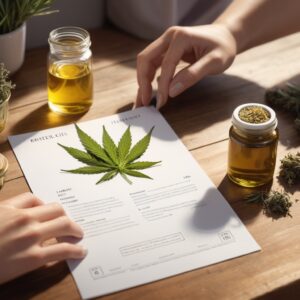
Highly effective for targeted relief. These ointments can be rubbed where needed and absorbed through the skin, which also filters out impurities. Ideal for sore joints, inflammation, cleansing, or loosening muscles before or after workouts.
“The skin is the body’s gateway, through it, cannabis and herbs speak directly to pain.”
Smoking and Vaping

This is the least recommended method for healing. For recreational use, it’s ideal, fast-acting, social, and enjoyable, but for wellness, the heat is the enemy.
Combustion temperatures reach 600–900°C, destroying beneficial compounds and turning many into carcinogens. Vapes can also pose risks like popcorn lung, caused by overheating oils. If you do use this method, ensure proper temperature control and moderation.
Aromatherapy

By far one of the most therapeutic and historical methods of healing.
Cannabis and most botanicals can be used this way, through essential oils, massages, or steam inhalation in saunas, humidifiers, or diffusers.
“Where smoke agitates, vapor soothes. The breath becomes medicine.”
Do Your Research
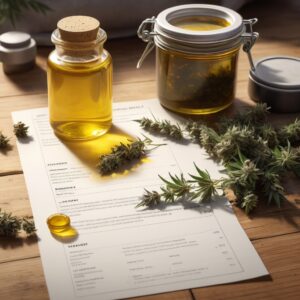
If you’re planning to use blends for healing, take the time to research which combinations work best for your chosen method. Get your dosages right, increasing the amount won’t necessarily increase the benefit. Always seek advice from a medical professional, especially for chronic or serious conditions.
“Nature offers balance, but balance demands respect.”

